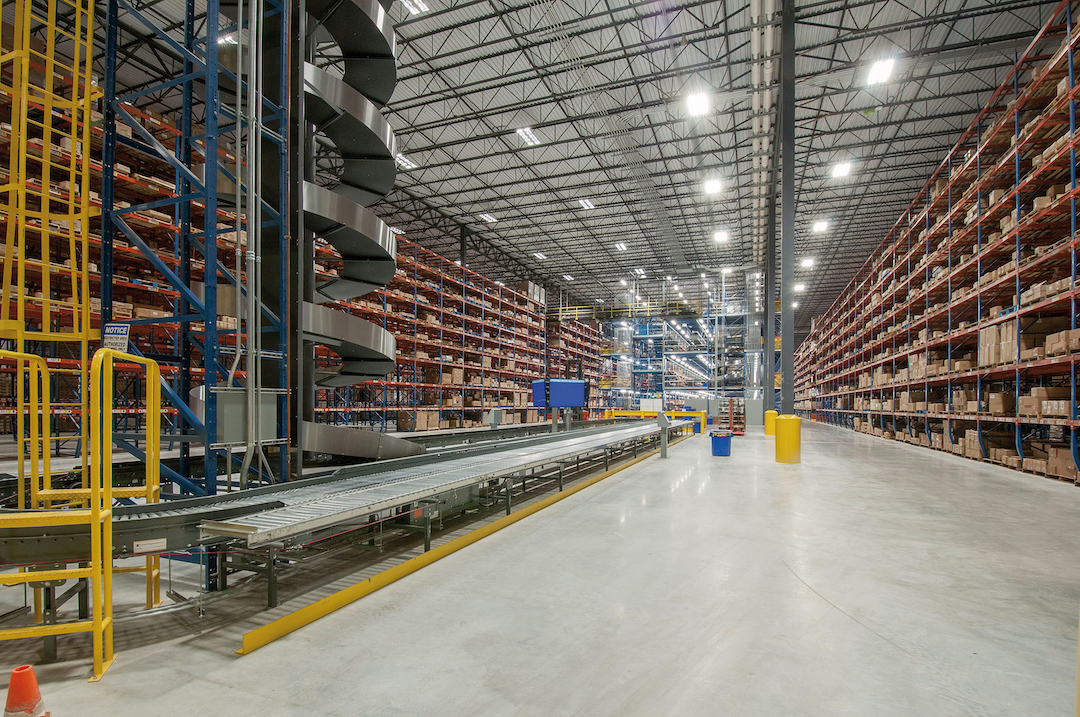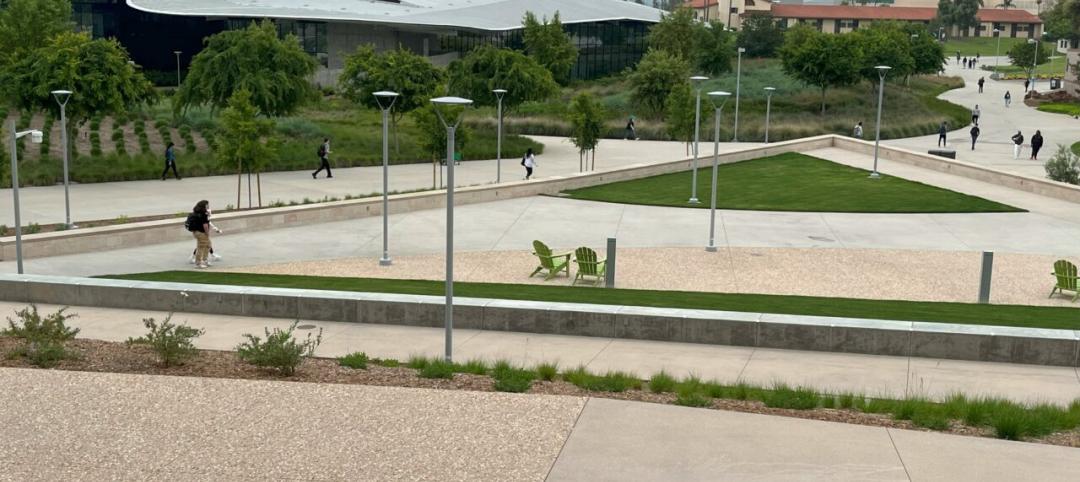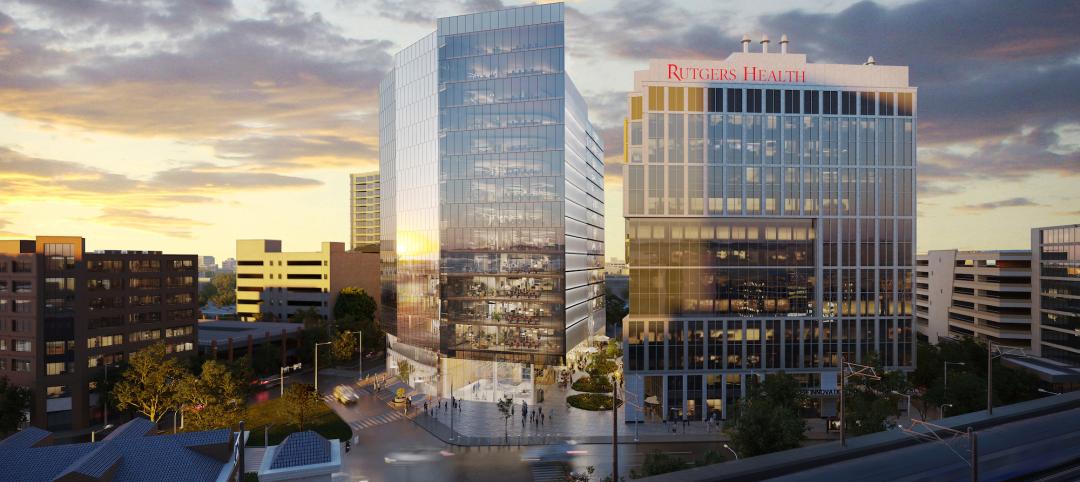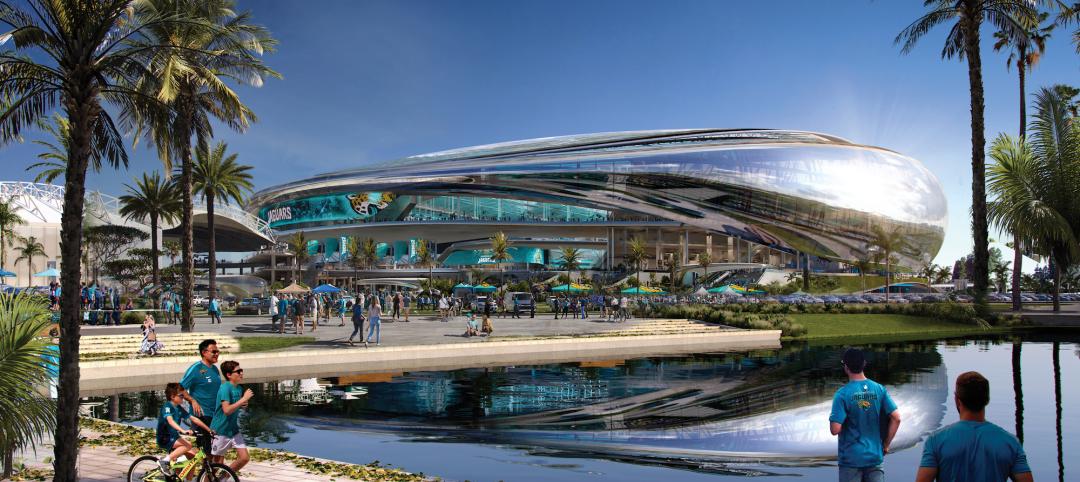The demand created by the unstoppable growth of ecommerce continues to have a major impact on the industrial building sector’s design and construction of factories, warehouses, distribution centers, and fulfillment centers.
Walmart Mexico is in the midst of a five-year program to build 15 distribution centers across that country. SSOE Group has engaged in the design and construction management of three of these so far: a 376,000-sf building in Chihuahua, a 645,000-sf distribution center in Tabasco, and a 400,000-sf facility in Chalco, according to Erick Kuri, SSOE’s Mexico Division Manager.
Stantec is experiencing greater demand for distribution centers (DCs) in all geographies, says George Halkias, a Senior Principal with the firm. He says the location of warehouse, distribution, and fulfillment centers is often determined by how quickly that building can be operational.
Related content: Top 70 Industrial Sector Architecture Firms
Related content: Top 85 Industrial Sector Engineering Firms
Related content: Top 95 Industrial Sector Contractors Firms
Michael Schmidt, Leo A Daly’s Market Sector Leader for Food, Distribution, and Manufacturing, sees clients shifting from large, remote distribution facilities to fulfillment centers closer to metros. One retail client, Target, commissioned his firm to transform one quarter of the square footage in five of Target’s million-sf DCs to accommodate fulfillment functions.
Ware Malcomb, which designs about 70 million sf of industrial space annually, is designing fulfillment centers that range from 40,000 sf to more than a million sf. Jim Terry, a Principal with the firm, notes that ceiling heights in some specialized ecommerce centers reach as high as 100 feet. Developers are considering cubic volume (abetted by technology) to accommodate more goods, and are asking for buildings with up to 40 feet of clear ceiling height.
Eric Buer, Burns & McDonnell’s Real Estate Development Director, says there’s a “huge need” for various types of warehousing and logistics capacity in response to the online sales boom. But at the current pace of development, only about half of the needed space over the next five years will be available.
The industry is definitely homing in on strategies to enhance and improve last-touch distribution capabilities. “The costs associated with multiple deliveries are the single largest target margin left in this cycle,” says Brian Chatham, a Project Manager with Burns & McDonnell. Chatham anticipates that freight consolidation by seller or delivery point will be an ongoing effort among operators.
Automating industrial facility operations
Automated storage and retrieval systems and robotics in general are becoming more common in industrial facilities, too, so Stantec has been working with clients to determine automation’s real impact on their ROI. Stantec uses such tools as discrete-event simulation and mathematical optimization to model, test, improve, and evaluate systems performance in a virtual environment against stated project objectives.
Kuri of SSOE adds that automation integration is driving mechanical and electrical support systems to accommodate fewer employees, “or essentially be able to go dark with lighting systems only for maintenance.”
Tech is pervasive in this sector. Todd Schell, Senior Vice President–Industrial Sector for Ryan Companies, spots a “renaissance” in concrete technology that, for DCs, helps to minimize the need for sawcut or other joints that are hard on equipment. Prefabrication is also a growing trend, which Schell says is being utilized mostly for MEP construction.
Ryan Companies uses BIM and VDC frequently during the design phase of industrial projects to eliminate conflicts. Clayco, which started or completed 41.2 million sf of industrial projects in 2018, designs all projects for this sector in 3D and in ways that the facility can be built in modularized sections offsite, says Anthony J. Johnson, Clayco’s Executive Vice President and Industrial Business Unit Leader.
As industrial buildings move nearer to urban areas, their designs are taking into account the surrounding aesthetic. “Our design approach is to look at warehouses as workplaces worthy of design excellence as a Class A office building,” says Schmidt of Leo A Daly.
The primary goal of any big change in this sector is, inevitably, faster delivery. “That requires finding land closer to customers, efficiency in scaling, and shortening delivery timeframes,” observes Clayco’s Johnson.
Buer says his firm is working on design ideas “for same-day, same-hour delivery options.” Like other AEC firms in this sector, Burns & McDonnell is keeping a close eye on the demand for and efficacy of multistory warehouse and distribution centers that last year started popping up in a few U.S. cities.
“The exciting new trend is for freestanding, multistory warehouses within metro areas,” says Borys Hayda, Partner and Managing Principal with DeSimone Consulting Engineers, which is designing five such projects to be located in the New York boroughs of Queens, Brooklyn, and The Bronx.
Ware Malcomb is working on five multistory distribution projects that are in various stages of development. The firm has master-planned over 50 sites to accommodate these facilities in major North American markets, says Michael Bennett, a Principal with the firm.
MORE FROM BD+C'S 2019 GIANTS 300 REPORT
Related Stories
Multifamily Housing | Jun 28, 2023
Sutton Tower, an 80-story multifamily development, completes construction in Manhattan’s Midtown East
In Manhattan’s Midtown East, the construction of Sutton Tower, an 80-story residential building, has been completed. Located in the Sutton Place neighborhood, the tower offers 120 for-sale residences, with the first move-ins scheduled for this summer. The project was designed by Thomas Juul-Hansen and developed by Gamma Real Estate and JVP Management. Lendlease, the general contractor, started construction in 2018.
Architects | Jun 27, 2023
Why architects need to think like developers, with JZA Architecture's Jeff Zbikowski
Jeff Zbikowski, Principal and Founder of Los Angeles-based JZA Architecture, discusses the benefits of having a developer’s mindset when working with clients, and why architecture firms lose out when they don’t have a thorough understanding of real estate regulations and challenges.
Apartments | Jun 27, 2023
Average U.S. apartment rent reached all-time high in May, at $1,716
Multifamily rents continued to increase through the first half of 2023, despite challenges for the sector and continuing economic uncertainty. But job growth has remained robust and new households keep forming, creating apartment demand and ongoing rent growth. The average U.S. apartment rent reached an all-time high of $1,716 in May.
Apartments | Jun 27, 2023
Dallas high-rise multifamily tower is first in state to receive WELL Gold certification
HALL Arts Residences, 28-story luxury residential high-rise in the Dallas Arts District, recently became the first high-rise multifamily tower in Texas to receive WELL Gold Certification, a designation issued by the International WELL Building Institute. The HKS-designed condominium tower was designed with numerous wellness details.
University Buildings | Jun 26, 2023
Addition by subtraction: The value of open space on higher education campuses
Creating a meaningful academic and student life experience on university and college campuses does not always mean adding a new building. A new or resurrected campus quad, recreational fields, gardens, and other greenspaces can tie a campus together, writes Sean Rosebrugh, AIA, LEED AP, HMC Architects' Higher Education Practice Leader.
Standards | Jun 26, 2023
New Wi-Fi standard boosts indoor navigation, tracking accuracy in buildings
The recently released Wi-Fi standard, IEEE 802.11az enables more refined and accurate indoor location capabilities. As technology manufacturers incorporate the new standard in various devices, it will enable buildings, including malls, arenas, and stadiums, to provide new wayfinding and tracking features.
Green | Jun 26, 2023
Federal government will spend $30 million on novel green building technologies
The U.S. General Services Administration (GSA), and the U.S. Department of Energy (DOE) will invest $30 million from the Inflation Reduction Act to increase the sustainability of federal buildings by testing novel technologies. The vehicle for that effort, the Green Proving Ground (GPG) program, will invest in American-made technologies to help increase federal electric vehicle supply equipment, protect air quality, reduce climate pollution, and enhance building performance.
Office Buildings | Jun 26, 2023
Electric vehicle chargers are top priority for corporate office renters
Businesses that rent office space view electric vehicle (EV) charging stations as a top priority. More than 40% of companies in the Americas and EMEA (Europe, the Middle East and Africa) are looking to include EV charging stations in future leases, according to JLL’s 2023 Responsible Real Estate study.
Laboratories | Jun 23, 2023
A New Jersey development represents the state’s largest-ever investment in life sciences and medical education
In New Brunswick, N.J., a life sciences development that’s now underway aims to bring together academics and researchers to work, learn, and experiment under one roof. HELIX Health + Life Science Exchange is an innovation district under development on a four-acre downtown site. At $731 million, HELIX, which will be built in three phases, represents New Jersey’s largest-ever investment in life sciences and medical education, according to a press statement.
Sports and Recreational Facilities | Jun 22, 2023
NFL's Jacksonville Jaguars release conceptual designs for ‘stadium of the future’
Designed by HOK, the Stadium of the Future intends to meet the evolving needs of all stadium stakeholders—which include the Jaguars, the annual Florida-Georgia college football game, the TaxSlayer.com Gator Bowl, international sporting events, music festivals and tours, and the thousands of fans and guests who attend each event.

















